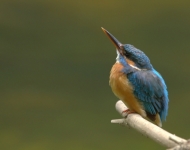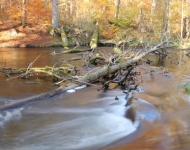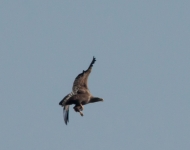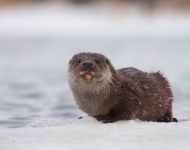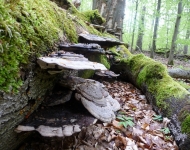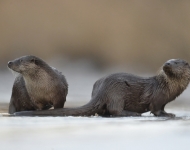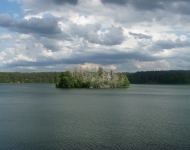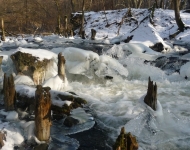Fauna
The Drawa National Park’s area is unique for its fauna not only on the regional, or national, but even on the Central European scale. A characteristic element of the DNP fauna is the large presence of species typical to vast and dense wilderness forest complexes, and also to the natural late-postglacial landscape of the Pomerania (Pomorze) region. Also worthy of stressing are the spontaneous natural tendencies of self-renewal observed in the DNP fauna.
One of the most precious natural elements of the Park is its fish world. 39 fish species are present in the DNP waters, as well as 2 species of jawless fish, all belonging to 11 families. The river richest in numerous species is Płociczna – 28 species, then comes Drawa – 27, Cieszynka – 19, Kotynica – 17, and Runica – 16. This great diversity can be attributed to the higher degree of water purity and lower degree of degradation here than in other Polish rivers. Besides some of the highly endangered, almost disappearing, species such as the river and brook lamprey, salmon, migrating troutr, and Baltic vimba, there still are some fish preserved and prospering much better here than on the national level: brook trout, greyling, Eurasian minnow, and White-finned gudgeon.
The lake richest in different species is Ostrowiec with its 24 taxonomy units. Among the endangered and most interesting fish living in lakes one can mention brown trout, Baltic vimba, European whitefish, and lavaret.
There are 13 species of amphibians and 7 species of reptiles in the Park. Among the rarest amphibians are tree frog, fire-bellied toad, and stripped toad. Some worthy of attention reptiles are European pond turtle, adder, and smooth snake. The populations of most amphibians and reptiles are stable and find great reproductory and living conditions in the Park.
The Park provides a safe harbour for birds. 160 species of birds have been distinguished in the Park and its neighbourhood. 55% of the total national number of different bird species nest here. It is a very significant ratio, provided that the Park is not very differentiated in terms of its landscape. The most precious are the species belonging to the categories E (endangered), V (vulnerable), and R (rare) according to the IUCN, species-under-protection zones, and other significantly endangered, dying out, or faunistically interesting. 10 species have been counted as such: black stork, merganser, black kite, red kite, white-tailed eagle, lesser spotted eagle, osprey, hazel grouse, eagle owl, and boreal owl. Other species rare or endangered on the regional scale are: cormorant, goldeneye, bee-eater, sparrow-hawk, English hobby, corncrake, crane, snipe, hermit, stockdove, kingfisher, wryneck, green woodpecker, mid-size woodpecker, mountain wagtail, warbler, firecrest, butcherbird, green finch, oak crossbill, and others.
There are over 40 species of mammals in the Park. Among the smaller mammals very interesting is the lesser water shrew, which figures in the Polish Red Book of Animals. The numerous bats are also worthy of attention (8 species are represented here), as well as the large populations of beaver and otter. The last two can be considered as representative species of the Park. One of the best-known groups of invertebrates is the caddis-flies. 65 different species of them were established to be present in the Park. One of the subspecies found here, Hydropsuchecontubernalis borealis, appeared to be new to Poland, while the following three were new to the Pomeranian Lake District (Pojezierze Pomorskie): Crinoecia irrorata, Ceraclea annulicornis, and Caraclea dissimilis. 13 other subspecies have been considered rare or endangered. The most valuable groups of caddis-flies live in the areas with of wellheads, rivers, as well as distrophic and oligotrophic lakes.
Another relatively well-researched group of insects are the dragonflies. 47 types have been found within the Park thus far. These are considered valuable or very valuable: Nehalenniaspeciosa, Aeshna subarctica elisabethae, Sympecma paedisca, Sumpectrum fonscolombei, and Leucorrhinia albifrons. The most valuable ones are usually found near the lakes of low trophicity.
The preliminary data about long-horned beetles, and the probability analysis of the potential presence of still-unfound types of them, allow for the conclusion that the Park area is very attractive for this group of insects. They are connected to the rich basis of habitats and food-plants present there, which is true for both the larva and adult specimen. 49 types of long-horned beetles have been found thus far, among them some rare ones, and more are predicted to be found yet. 8 of them are stenothermal. Very interesting was the finding of the rare Phymatodes glabratus.
Day butterflies present here do not make this area distinct on the national scale, even with the 54 types of butterflies found here. However, considering the geographical layout of the Park, its large degree of woodiness and a small number of places abundant in sunshine and green plants, this number is rather impressive. The stations of Agryronome laodice and Cartetocephalus palemon in the Park are the furthest place of their reach into Poland, while Lycaena dispar is endangered in Europe. In the xerothermic places Polyomnatus coridon is worthy of noticing
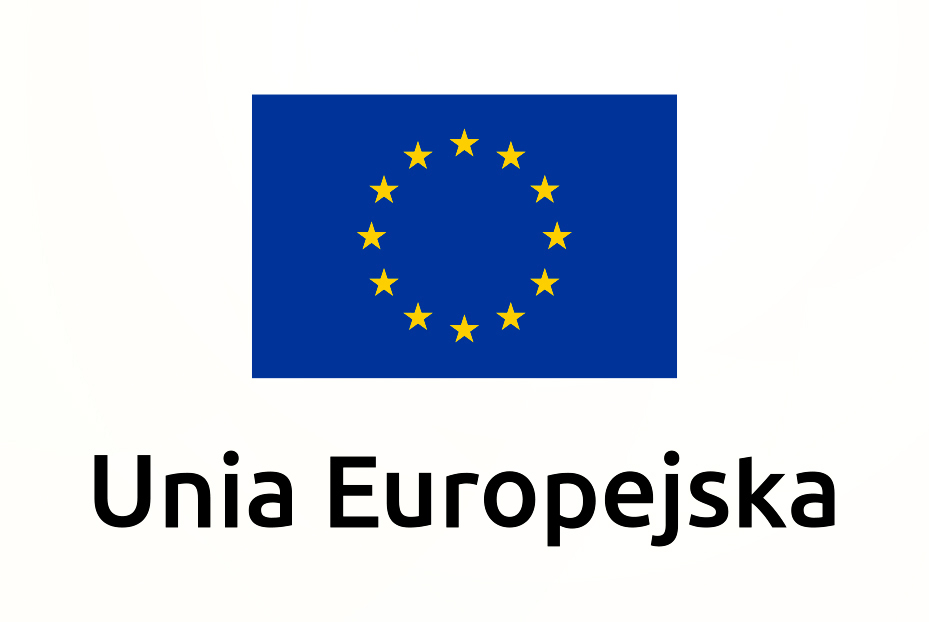

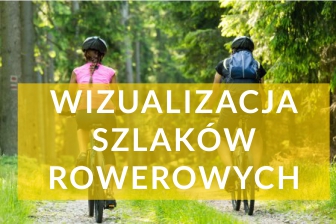

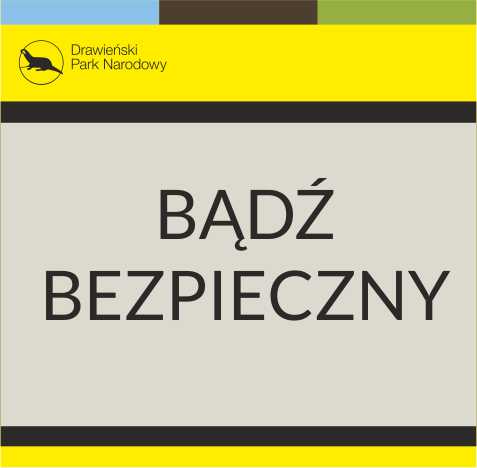

Search
Gallery
Newsletter
Będziemy informować Cię o nowościach w serwisie oraz ważnych wydarzeniach w Parku.
Contact
ul. Leśników 2, 73-220 Drawno,
tel.: (095) 768 20 51,
(095) 768 20 52
fax: (095) 768 25 10
email: [email protected]














